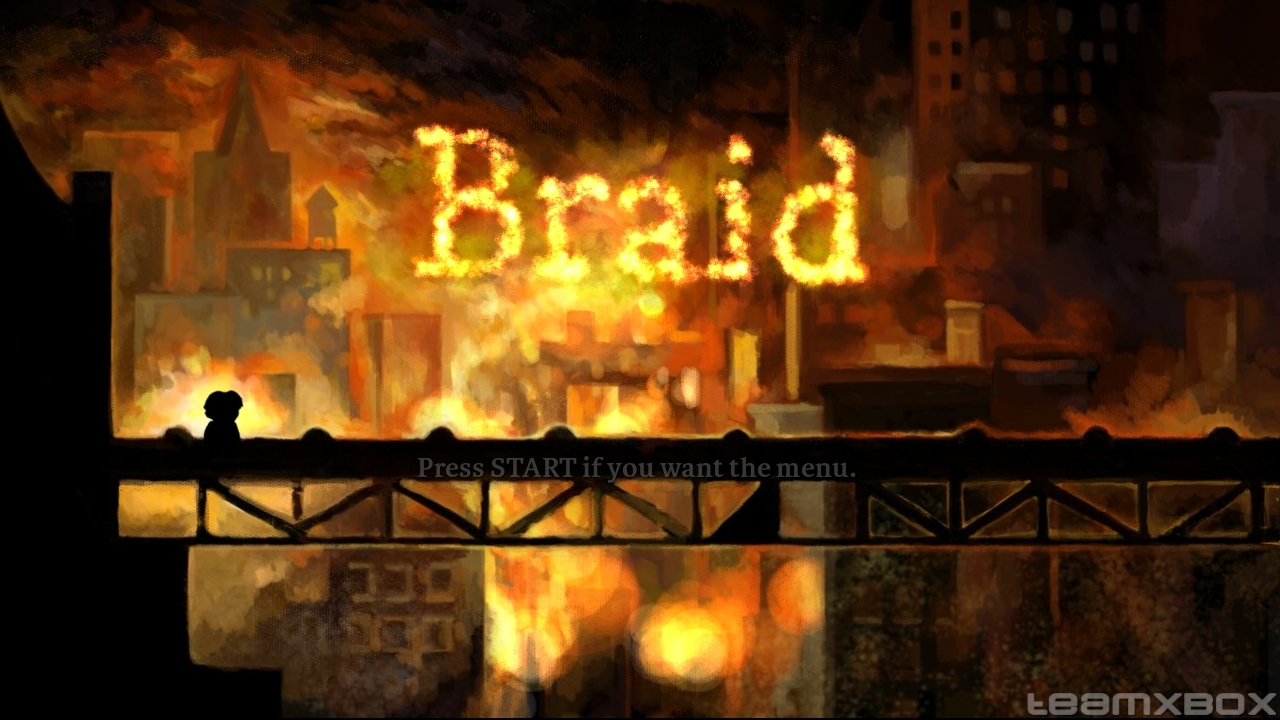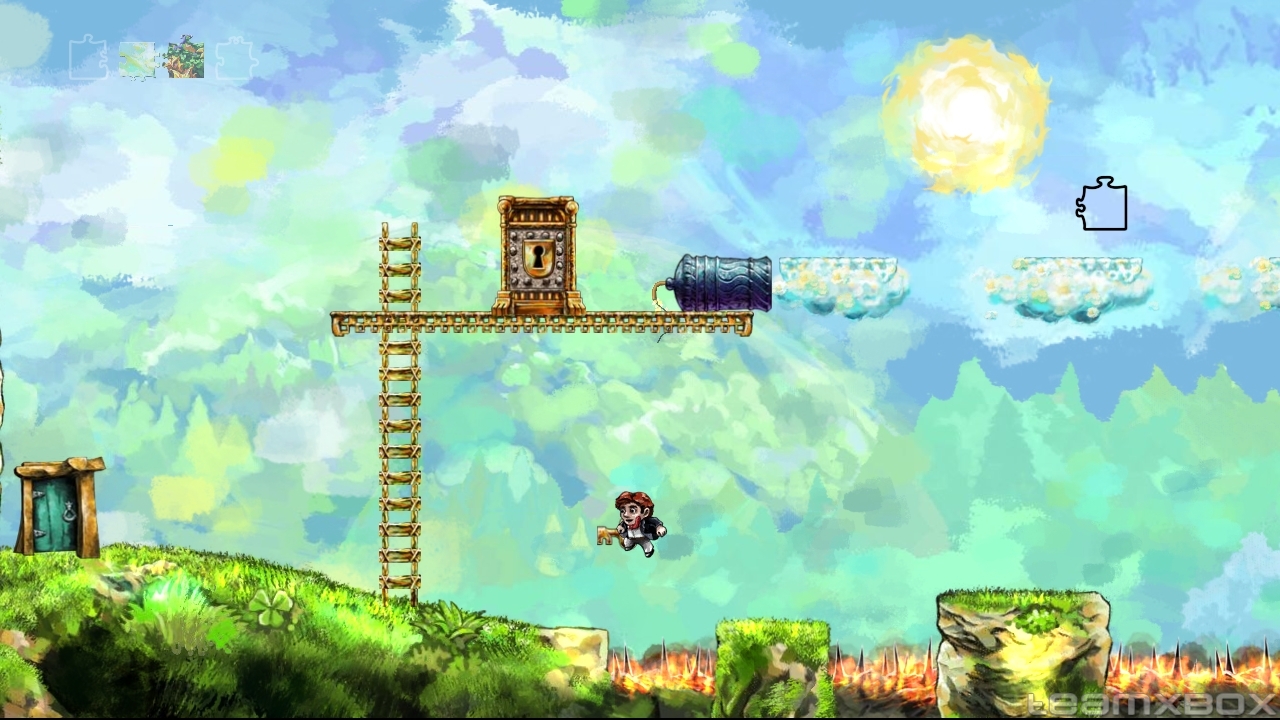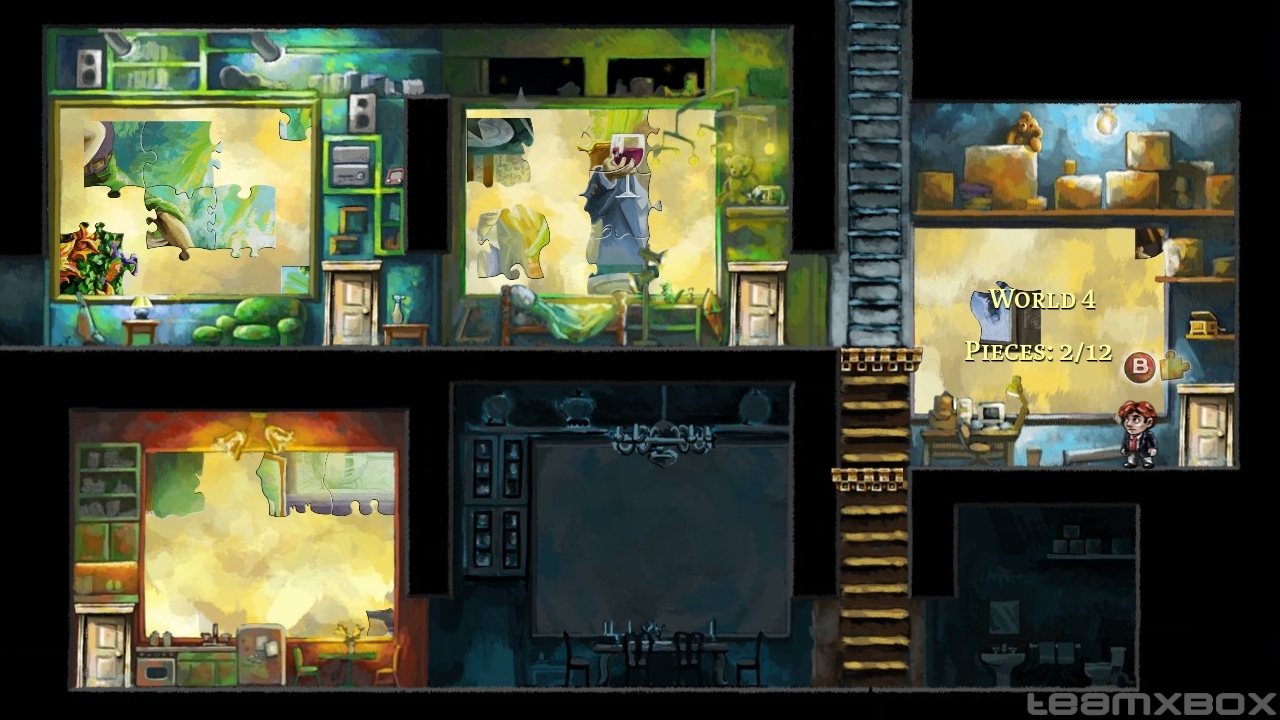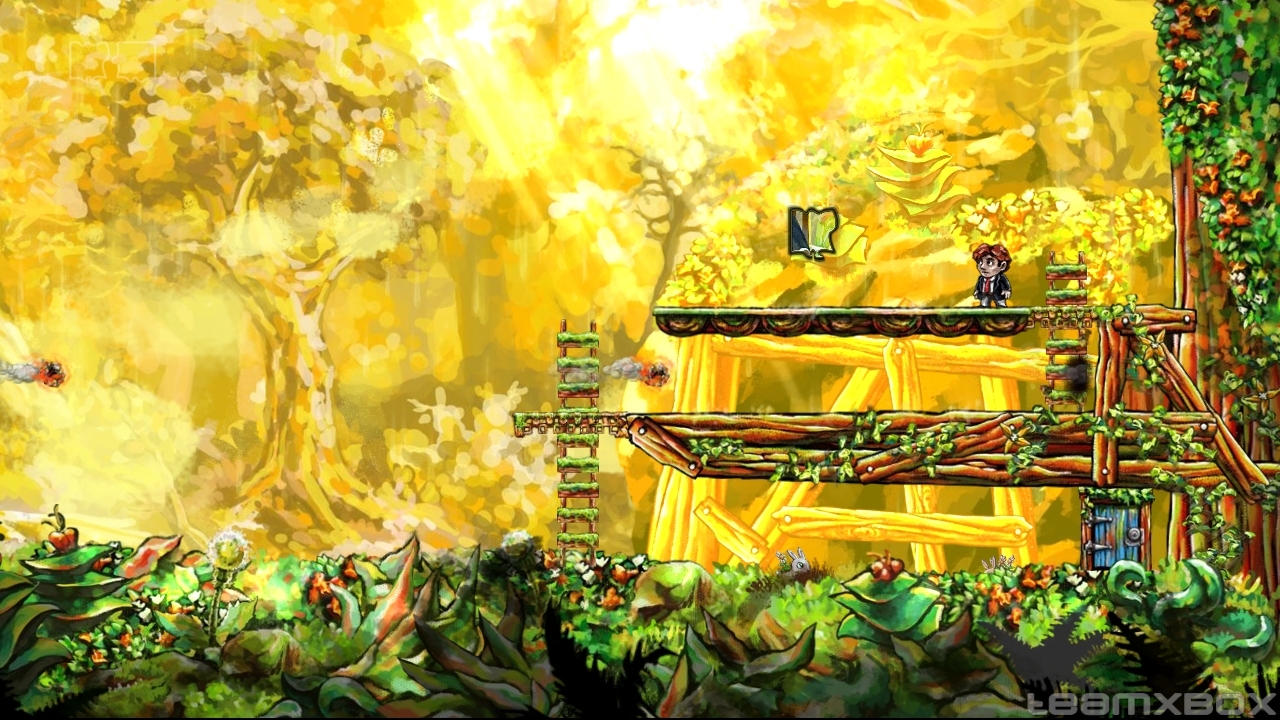
Every now and then a game comes along and takes you by surprise. I had the pleasure of experiencing this a few days ago, and I feel that my horizons as both a gamer and a developer have expanded because of it.
The harbinger of my elation goes by but a single name: Braid.
By now you've probably heard a little bit about Braid here or there - it seems impossible not to. After only a few days on the XBL Marketplace, Braid became the highest rated game on XBL Arcade, and entered the exclusive list of top 10 all-time highest rated games for the Xbox 360, which includes titles like Grand Theft Auto 4, Gears of War, and Bioshock.
While notable in itself, this is quite an accomplishment considering the game was made by only a small team of indie game designers and artists, on an infinitesimally smaller budget than any of the other AAA titles it's contending with.

So what's all the hoopla about? At the outset, it's simple enough - Braid is a 2D platform game where you traverse an assortment of levels to find and collect jigsaw pieces. Delve a bit deeper though, and the game quickly sets itself far apart from most other platformers you've played. Time, and the manipulation of it, plays an important role in the narrative of the story, and more importantly, how puzzles in the game are solved. Braid's development team went to great lengths to craft smart, unique levels that take advantage of this element of the game. Each chapter of levels offers a different take on the way time affects you and the environment, with each puzzle more devious than the last. And even though most of the puzzles seem to have only one or two possible solutions, each one will leave you with a feeling of deep satisfaction for solving it.
At this point, I could stop writing and you'd have a pretty good idea of why Braid is a good game, but I really feel that merely describing the game for its amazing technical presentation isn't fully doing it justice. There's a lot more to Braid than that. The entire presentation is mentally stimulating.

Braid's narrative, told through a handful of dialog boxes and books placed on a series of podiums before each level, tell the emotional story of the game's main character, Tim, and his troubles. The text in the game is well-written, and is in some ways, very touching.
Braid opens with what looks like a painted title screen. After a few moments, you realize that what you're looking at isn't really just a title screen - it's the actual game, and you can actually play it right from the start. I really liked the way the game opens without an interface, and I think it says a lot about how great the game's design is that you don't even need to access any menus until you're ready to leave.

The game's graphics (courtesy of David Hellman) are incredible though; I think I spent the first 20 minutes of the game just looking at the backdrops. Scenes that would look amazing as flattened artwork scroll with depth unimaginable, and everything in the foreground is gorgeous to boot. So much effort was put into making Braid a visual feast, it's almost impossible to imagine that time was spent to ensure the game was enjoyable as well. The soundtrack, licensed from some very talented people at Magnatune, is equally as good as the graphics, and wraps the game in an enchanting veil that lends credibility to the story and completes the presentation in a satisfying way.
I've been playing Braid over the last few days, taking small bites at a time, and trying to complete each puzzle I come across. Everything about the game is incredible, and though I've gotten to the point where some of the puzzles seem a bit on the hard side (or maybe I'm just not trying to do things the right way), I'm having a blast. The $15 price tag sounded steep before I tried the demo, but after only a few minutes of playing, I made the choice to buy.

Braid is the collective work of many people who obviously care about their craft, and this shows at every turn. I hope that the Braid team goes on to do create more unique games. This should serve as a lesson to the nay-sayers who cry that indie games don't have a place in the highly commercial world of video games. They do, and Braid proves it without missing a step.
If you've got an Xbox 360 (or if you can hold out for the PC version), buy Braid. It's an amazing game that deserves to be experienced by everyone.
6 Comments
I haven’t played any part of Braid, but that doesn’t mean I can’t blather on about it. I’ve been following its progress for at least a year now. It’s one of the few releases that’s excited me this year. The fact that it was created by the sometimes provocative former Game Developer Magazine columnist Jonathan Blow is more than part of the reason it’s held my interest. I really appreciate designers who have strong (and often unpopular) opinions about gaming. Those are the people who advance the medium. It’s all well and good to make a profit in “the industry”, but it’s meaningless without artists driving it forward.
It was brave to try to make what on the surface appears to be a bog-standard antiquated 2D platformer and attempt to turn into something far greater than its collective parts. Using the familiar in unexpected ways to challenge one’s notions or assumption of the world is what art is all about. I’ve heard people idiotically bad-mouth Blow for being a pompous windbag simply because he is deeply committed to, and excited by, his game. It’s a shame that more developers don’t take as much pride in their work — and even more shameful that many gamers aren’t willing to look beyond the screen shots or be receptive to the artistry of play.
Something that’s interesting to me is the risk invested in the polishing of this game. According to Blow, the game play and all of the levels were completed a couple years ago, and the remaining time has been spent on the thoughtful presentation. That represents an enormous portion of the total budget, but it looks to me like it was the right decision. It would have been easy to release the game with lackluster graphics and seen it slip into obscurity like so many Psychonauts. Blow understands that it’s not just about gameplay; pleasing presentation is vital to a game’s success. The flip-side is a game like Luc Bernard’s Eternity’s Child. It’s another gorgeous-looking 2D platformer, but it was clearly made by someone without any understanding of what makes a game worth playing. That’s what makes Braid standout: the pure thoughtfulness put into every aspect of it.
It’s heartbreaking that so many seem to be complaining about the game’s price right now, but I think this game has legs. I hope it will see release on more platforms so that others can experience it. Unfortunately it may never see a WiiWare release because of the Wii’s severe storage limitations. Nintendo: This is the game that should convince you to release a storage device/upgrade for the Wii.
Hmmmm, after looking at the full screen graphics, could this game even work on a standard definition television? Would it still play correctly with a tighter view? I know a big part of the success of this game is begin able to see what’s going on around you, but it would be a shame to reduce the resolution (and readability) of the beautiful graphics.
Yeah, it works fine – I’ve been playing on a SDTV the whole time, as I’ve been too lazy (and too comfortable in my living room) to move it back to my computer desk. I couldn’t believe some of the screenshots online after playing on SDTV. You do miss a lot of the fidelity with games like Braid, where the graphics are made specifically for an HD display.
And I completely agree Xot – what you see in Braid isn’t just talent or skill in graphics, programming, etc. It’s the result of something made by people who genuinely care about the final product. I almost want to say that the bigger the team gets, the harder it is to realize something like this, but I’ve played a few larger-budget games that feel cared for as well, so it’s not entirely the case.
I only wish more games could be like this!
I have yet to play Braid yet, though I plan on downloading the demo when I get the chance (after reading this article). It definitely looks like quite a visually stunning game, and I particularly care for the way the lighting effects were made on the graphics. But this brings me to one of the biggest caveats I have with any kind of game, whether it be a Game Maker one, an indie game such as this, or a AAA title like Gears of War or Half Life 2: Most developers don
I think that developers on all levels can (and do) care about about games, but the problem is that when your team gets to be large enough, all it takes is one or two people who don’t (and that includes people on the publisher side of things), and you’ve got a pile of crap instead of a pretty decent game.
I do agree though, Braid was clearly made by people who care about the craft, and the further I’ve advanced through it (only one more puzzle wall to go!) the more that is evident.
Wow this actually looks really promising and cool. I’ll have to check this game :o